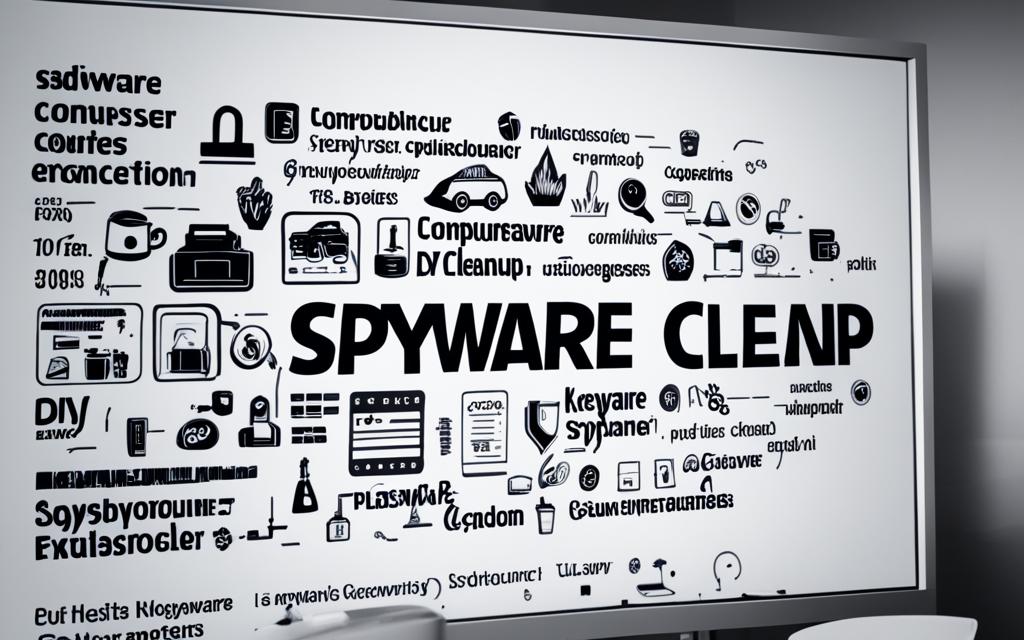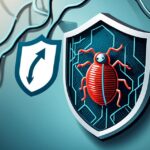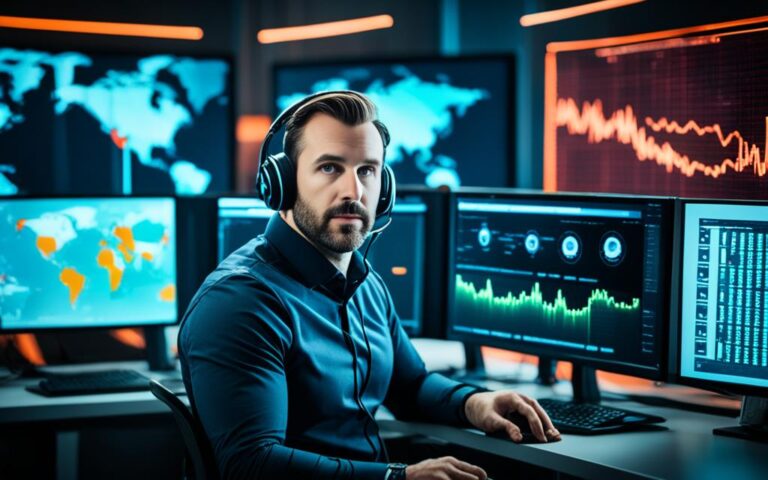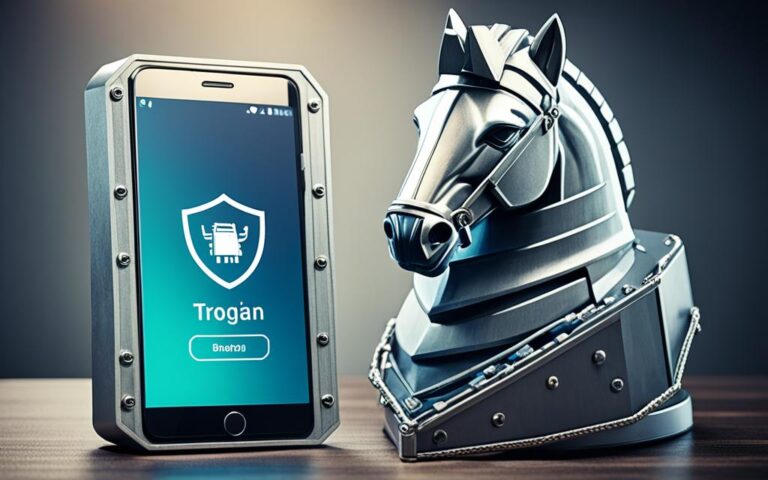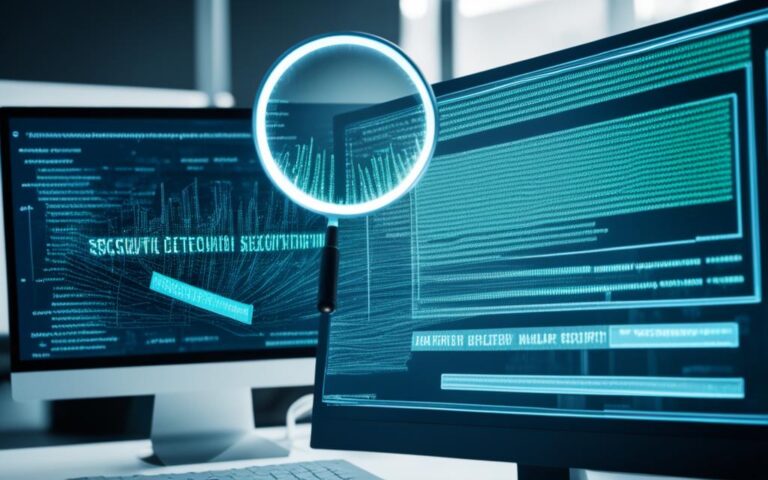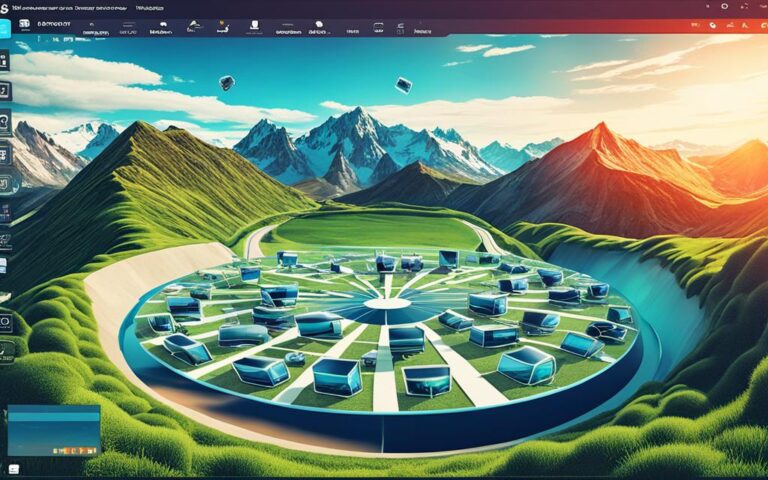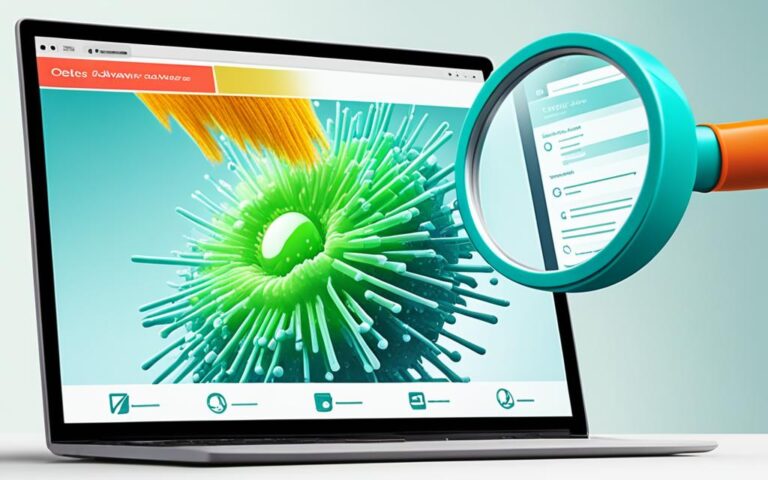DIY Spyware Cleanup: Tools and Techniques for Non-Techies
Spyware infestations can be a major nuisance, affecting computer performance and compromising digital privacy. To effectively remove spyware without relying on professional help, non-tech-savvy individuals can use a variety of tools and techniques. By following these steps, you can safeguard your digital privacy and eliminate spyware from your system.
In this section, we will explore the best spyware removal tools and techniques suitable for non-techie users. Whether you are dealing with annoying pop-ups or experiencing performance issues, these methods will help you regain control of your computer.
The Consequences of Spyware Infections
Spyware infections can have serious consequences for computer users. They can cause performance problems, interrupt gameplay with incessant popups, and even compromise sensitive personal data. Spyware can disguise itself as legitimate software, record keystrokes, capture video and audio through webcams, and gather information from emails, messages, social media, and browser searches. It is important to address and remove spyware to safeguard digital privacy and protect the integrity of your system.
If left unchecked, spyware infections can lead to a range of issues, including:
- Sluggish system performance: Spyware consumes system resources, resulting in slow startup times and lagging applications. This can significantly impact productivity and frustrate users.
- Unwanted pop-ups and ads: Spyware can generate a barrage of unwanted advertisements, making it difficult to browse the web or play games without constant interruptions.
- Identity theft and fraud: Spyware can collect sensitive information, such as login credentials, credit card details, and social security numbers. This puts users at risk of identity theft and financial fraud.
- Unauthorized access to personal data: Spyware can grant remote attackers access to personal files, photos, and videos stored on the infected system. This invasion of privacy can have long-lasting consequences.
To mitigate the consequences of spyware infections, it is crucial to take immediate action. Ignoring spyware can lead to further system damage and an increased risk of falling victim to hackers and cybercriminals.
“Spyware can pose a significant threat to both individuals and businesses. Its ability to infiltrate systems, compromise privacy, and hinder performance makes it a top concern for cybersecurity experts.” – John Stevens, IT Security Specialist
Fortunately, there are effective tools and techniques available to combat spyware and protect your digital assets. In the next section, we will explore manual spyware removal techniques that non-tech-savvy individuals can utilize to eliminate spyware from their systems.
Manual Spyware Removal Techniques
Manual spyware removal techniques can be effective for non-techies who prefer to take matters into their own hands. By using the right tools and following the recommended steps, you can eliminate spyware from your system and enhance your digital security.
1. SysInternals’ Process Explorer
SysInternals’ Process Explorer is a powerful tool that can help you stop running spyware processes. Here’s how you can use it:
- Download and install SysInternals’ Process Explorer.
- Open Process Explorer and go to the “View” menu.
- Select “Select Columns” and then choose “Company Name” from the list.
- Click on the “OK” button to apply the changes.
- Sort the process list by the “Company Name” column.
- Kill any processes without a recognized Company Name.
This will deactivate active spyware processes running on your system, preventing further harm.
2. SysInternals’ AutoRuns Utility
The SysInternals’ AutoRuns utility is another useful tool for manual spyware removal. It helps you stop spyware from restarting on system boot. Follow these steps:
- Download and install SysInternals’ AutoRuns utility.
- Open AutoRuns and review the list of programs and services.
- Delete any suspicious entries without a recognized Publisher.
By deleting these entries, you can eliminate spyware from your system and prevent reinfection.
Manual spyware removal techniques can be time-consuming and require some technical knowledge. If you’re not comfortable performing these steps on your own, it’s recommended to seek professional help or use dedicated spyware removal tools.
Using Spyware Removal Tools
Non-techies can effectively clean up their systems by using dedicated spyware removal tools. These tools are highly recommended for comprehensive spyware removal:
- SUPERAntiSpyware: A comprehensive tool that scans for and removes spyware. It offers options for custom scans, process termination, and startup management.
- Malwarebytes: Known for its thorough scanning capabilities, Malwarebytes can detect and remove spyware along with other types of malware. It offers a user-friendly interface and customizable scan options.
- Avast Free Antivirus: This antivirus program provides real-time protection against spyware and other threats. It features customizable settings, silent/gaming mode, and exclusions.
- AVG AntiVirus Free: Along with its malware scanning capabilities, AVG can scan boot sectors, rootkits, cookies, and registry items. It also includes advanced features like Deep Scan for a more thorough check.
- Adaware Antivirus: This program actively blocks and removes spyware and other threats. It offers scheduled scans, silent/gaming mode, and exclusions.
To ensure a secure and spyware-free system, non-techies should consider using one or more of these spyware removal tools. The effectiveness of these tools can help safeguard digital privacy and protect against harmful spyware infections.
Expert Insight:
“Using dedicated spyware removal tools like SUPERAntiSpyware, Malwarebytes, Avast Free Antivirus, AVG AntiVirus Free, and Adaware Antivirus is crucial for non-techies who want a simple yet effective way to clean up their systems. These tools provide advanced features and comprehensive scanning capabilities, ensuring thorough spyware removal without the need for technical expertise or assistance.”
– Cybersecurity Expert
Conclusion
Removing spyware doesn’t have to be a daunting task for non-techies. By following the recommended tools and techniques, you can effectively clean up your system and protect your digital privacy.
Whether you choose manual removal techniques or utilize dedicated spyware removal tools, it’s important to stay proactive in preventing spyware infections. Regularly updating your web browser, using reliable antivirus software, and practicing safe browsing habits can help minimize the risk of future spyware infestations.
Take control of your digital security today and safeguard your sensitive information from prying eyes. With DIY spyware removal, you can confidently protect your system and enjoy a safe and secure online experience.
